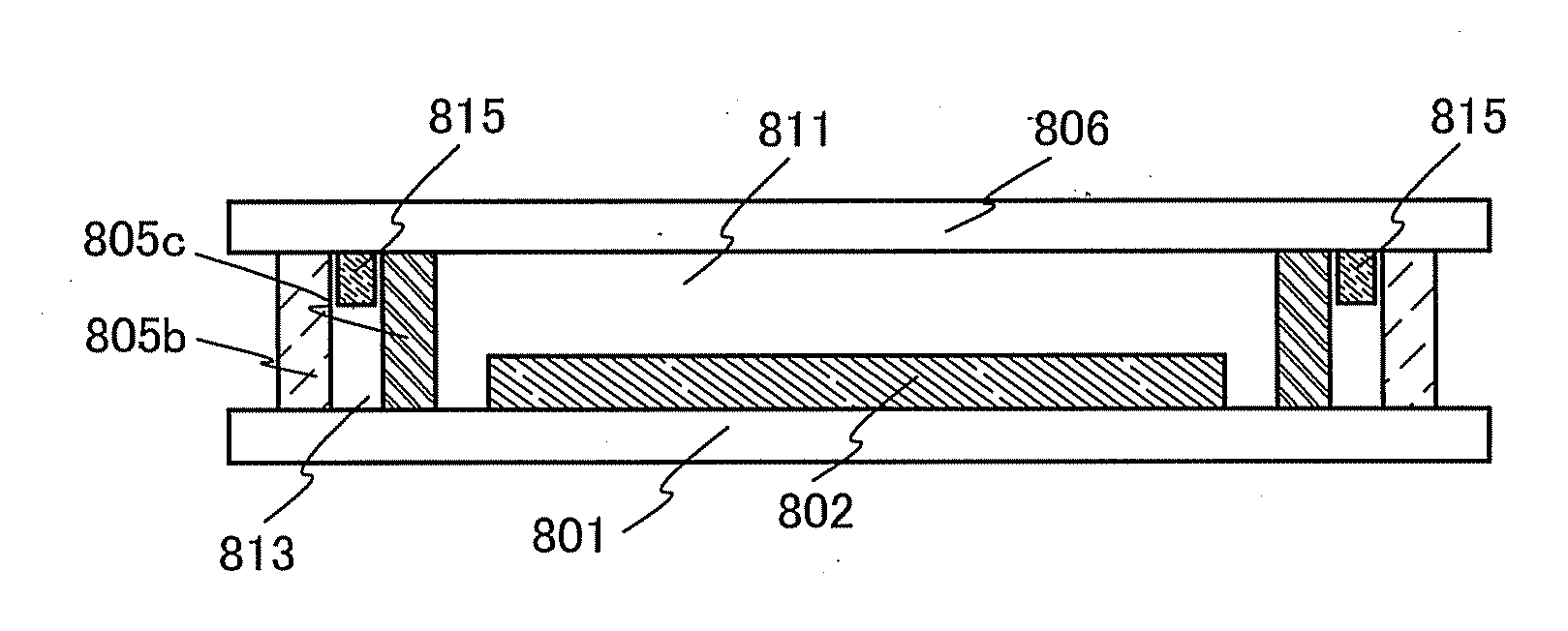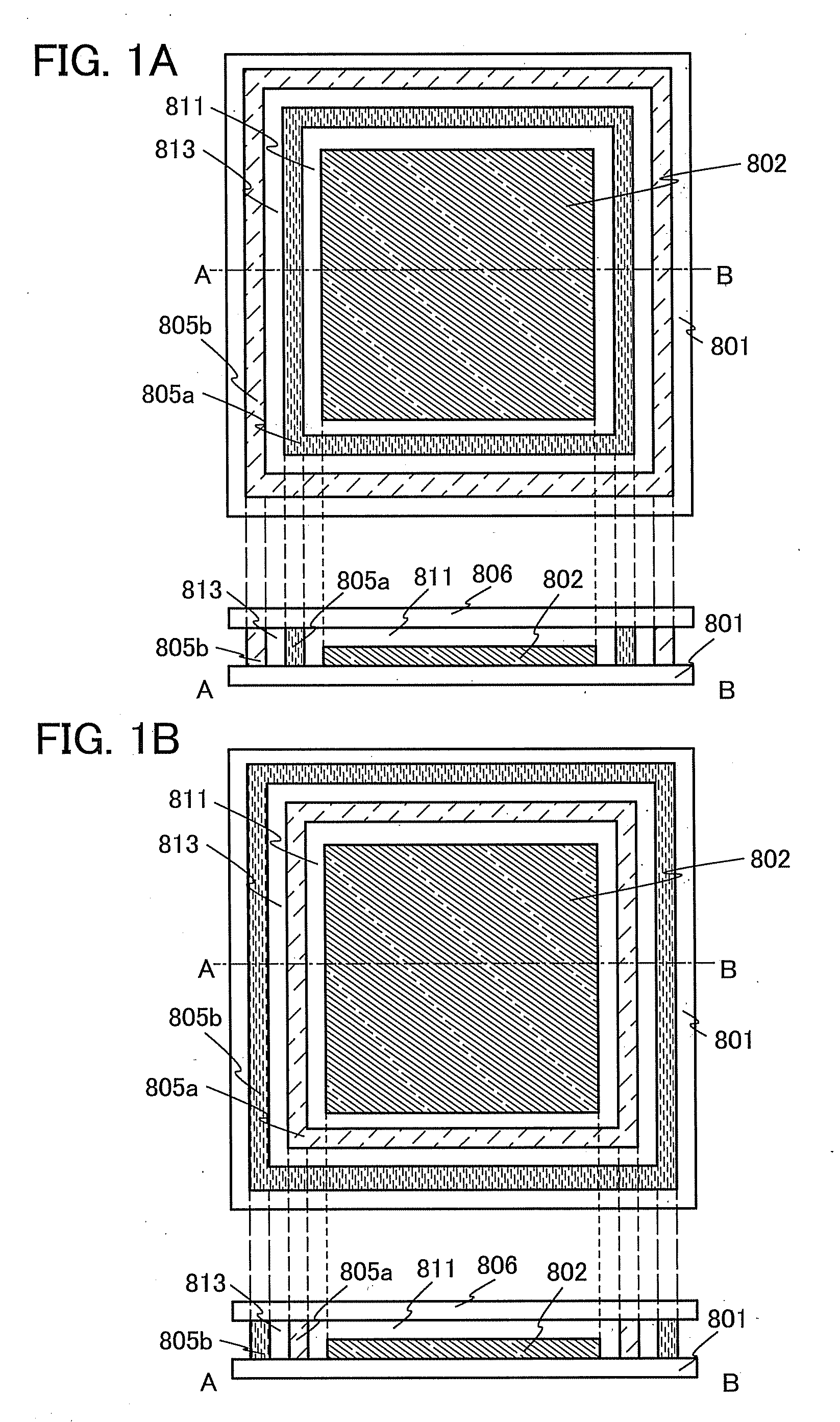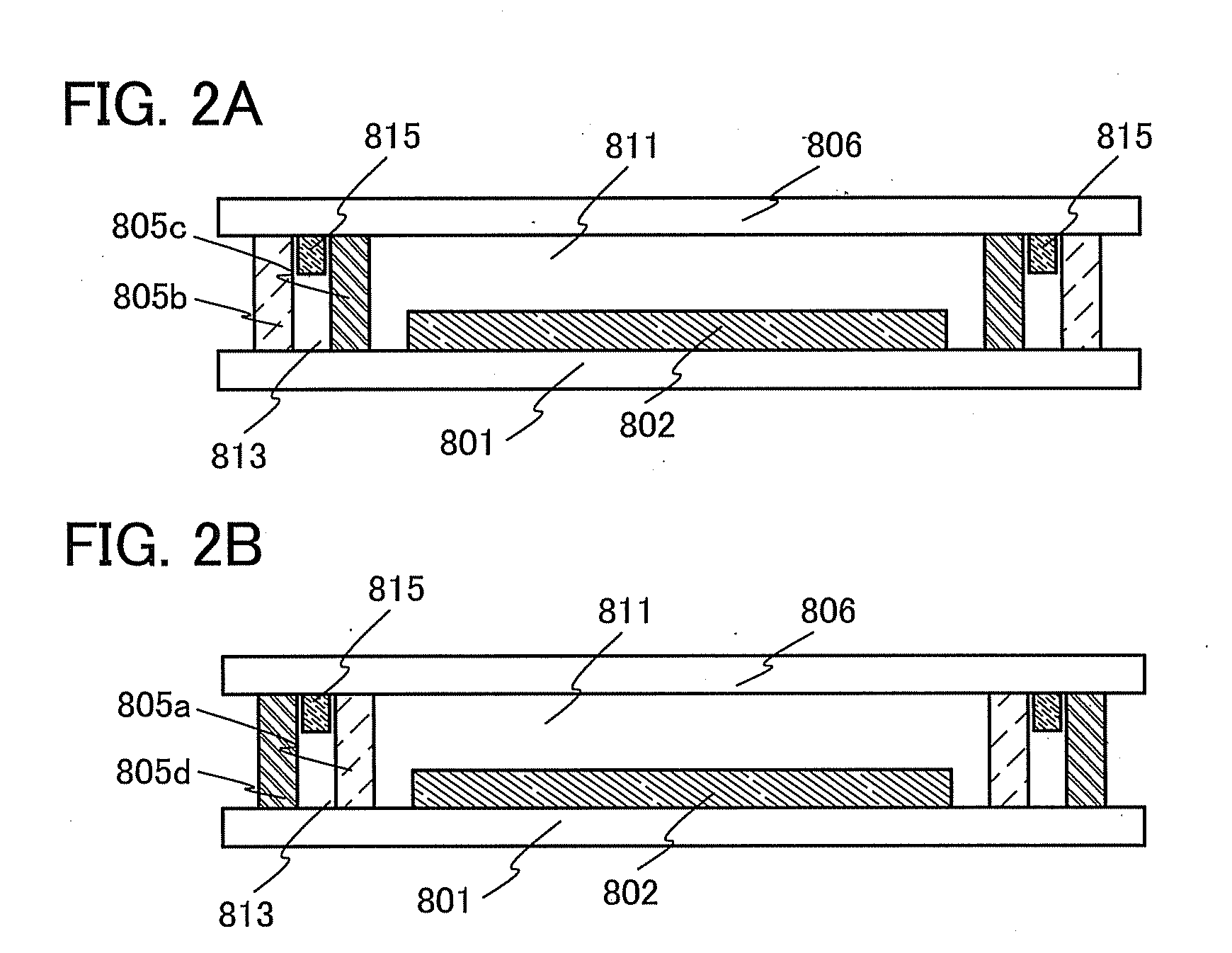Light-Emitting Device, Electronic Device, Lighting Device, and Method for Manufacturing the Light-Emitting Device
- Summary
- Abstract
- Description
- Claims
- Application Information
AI Technical Summary
Benefits of technology
Problems solved by technology
Method used
Image
Examples
embodiment 1
[0055](Embodiment 1)
[0056]In this embodiment, light-emitting devices of one embodiment of the present invention will be described with reference to FIGS. 1A and 1B and FIGS. 2A and 2B.
[0057]The light-emitting device of one embodiment of the present invention includes one or more light-emitting elements between a first substrate and a second substrate which face each other. The light-emitting element includes a layer containing a light-emitting organic compound (hereinafter referred to as an EL layer) between a pair of electrodes. The light-emitting element is sealed with a first sealant which is provided along the peripheries of the first substrate and the second substrate to surround the light-emitting element. Further, the light-emitting element is sealed with a second sealant which is provided along the peripheries of the first substrate and the second substrate to surround the first sealant. One of the first sealant and the second sealant is a glass layer and the other is a resi...
embodiment 2
[0119](Embodiment 2)
[0120]In this embodiment, a method for manufacturing a light-emitting device, according to one embodiment of the present invention will be described with reference to FIGS. 3A to 3C and FIGS. 4A to 4C. In particular, Structural Example 2 (see FIG. 1B) described in Embodiment 1 will be described as an example.
[0121]{First Step: Formation of Light-Emitting Portion}
[0122]The light-emitting portion 802 is formed over the first substrate 801 (FIG. 3A). Specifically, the organic EL element, a transistor for controlling light emission of the organic EL element, and the like included in the light-emitting portion 802 are formed. In the case of an active matrix light-emitting device, a driver circuit portion or the like may be provided in addition to the light-emitting portion 802. A structural example of the active matrix light-emitting device will be described in detail in Embodiment 3.
[0123]{Second Step: Formation of Sealant 1 Glass Layer}
[0124]In this embodiment, the ...
embodiment 3
[0162](Embodiment 3)
[0163]In this embodiment, a light-emitting device of one embodiment of the present invention will be described with reference to FIGS. 5A and 5B. FIG. 5A is a plan view of the light-emitting device of one embodiment of the present invention and FIG. 5B is a cross-sectional view taken along dashed-dotted line E-F in FIG. 5A.
[0164]An active matrix light-emitting device according to this embodiment includes, over the first substrate 801, the light-emitting portion 802, a driver circuit portion 803 (gate side driver circuit portion), and a driver circuit portion 804 (source side drive circuit portion). The first sealant 805a is provided so as to surround the light-emitting portion 802, the driver circuit portion 803, and the driver circuit portion 804, and the second sealant 805b is provided so as to surround the first sealant 805a. Thus, the light-emitting portion 802 and the driver circuit portions 803 and 804 are sealed in the second space 811 surrounded by the fi...
PUM
 Login to View More
Login to View More Abstract
Description
Claims
Application Information
 Login to View More
Login to View More - R&D
- Intellectual Property
- Life Sciences
- Materials
- Tech Scout
- Unparalleled Data Quality
- Higher Quality Content
- 60% Fewer Hallucinations
Browse by: Latest US Patents, China's latest patents, Technical Efficacy Thesaurus, Application Domain, Technology Topic, Popular Technical Reports.
© 2025 PatSnap. All rights reserved.Legal|Privacy policy|Modern Slavery Act Transparency Statement|Sitemap|About US| Contact US: help@patsnap.com



